Abstract
The effect of aqueous lead acetate given per os to chickens for 35 consecutive days and the effect of lead on interferon and antibody production was investigated. Chickens were found to tolerate levels of lead as high as 160 mg/kg/day without exhibiting clinical signs or hematological changes in spite of very high levels of lead in the blood (6.2 ppm). It is apparent from these findings that chickens are more resistant to lead poisoning than humans, horses, dogs and wild fowl such as ducks.
Subclinical lead doses did not affect interferon induction in response to statolon and Newcastle Disease virus (NDV)-B1. Interferon concentrations and duration in serum were markedly decreased in chickens which received lead at the 320 mg/kg level.
Long time lead exposure had no marked effect on antibody production to NDV in chickens. No consistent correlation was observed between blood lead concentration and antibody titer.
The results of these studies indicate that long term subclinical lead intake suppresses neither interferon nor antibody production in chickens.
Full text
PDF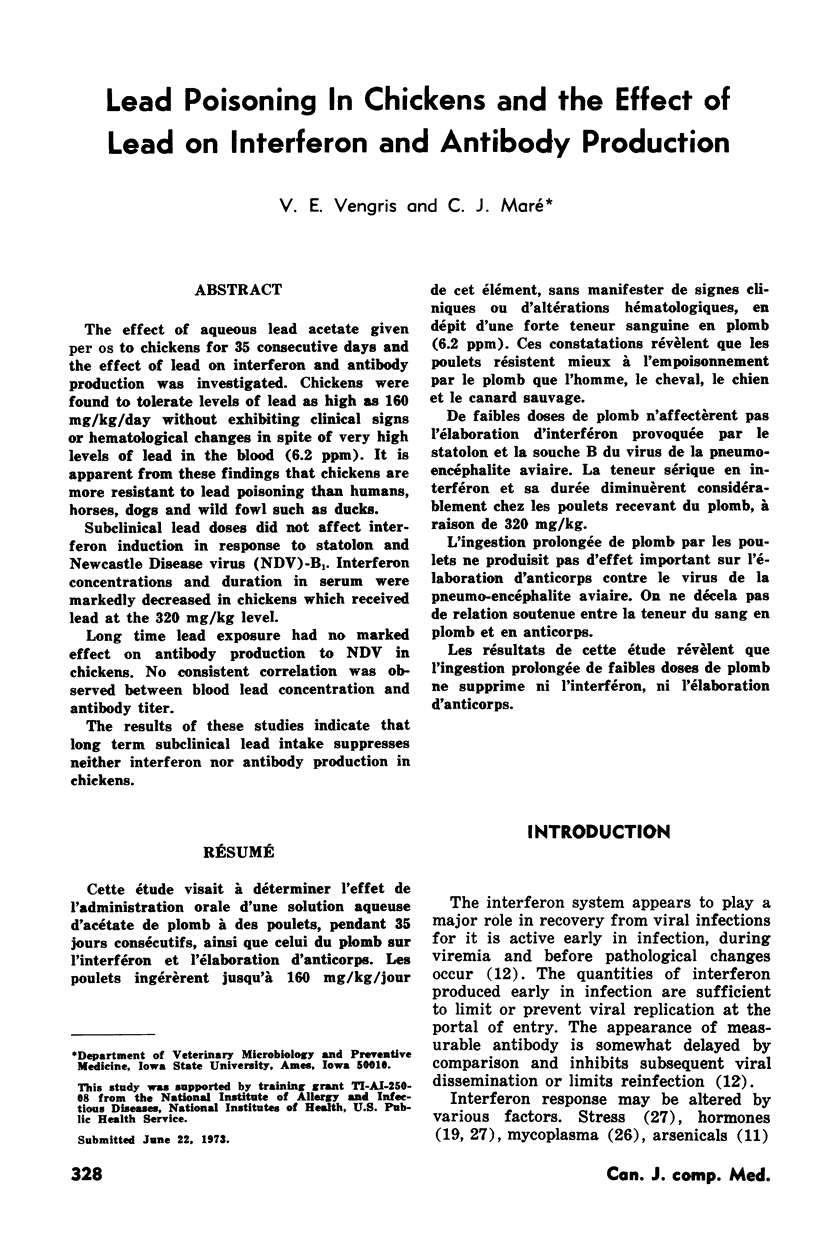
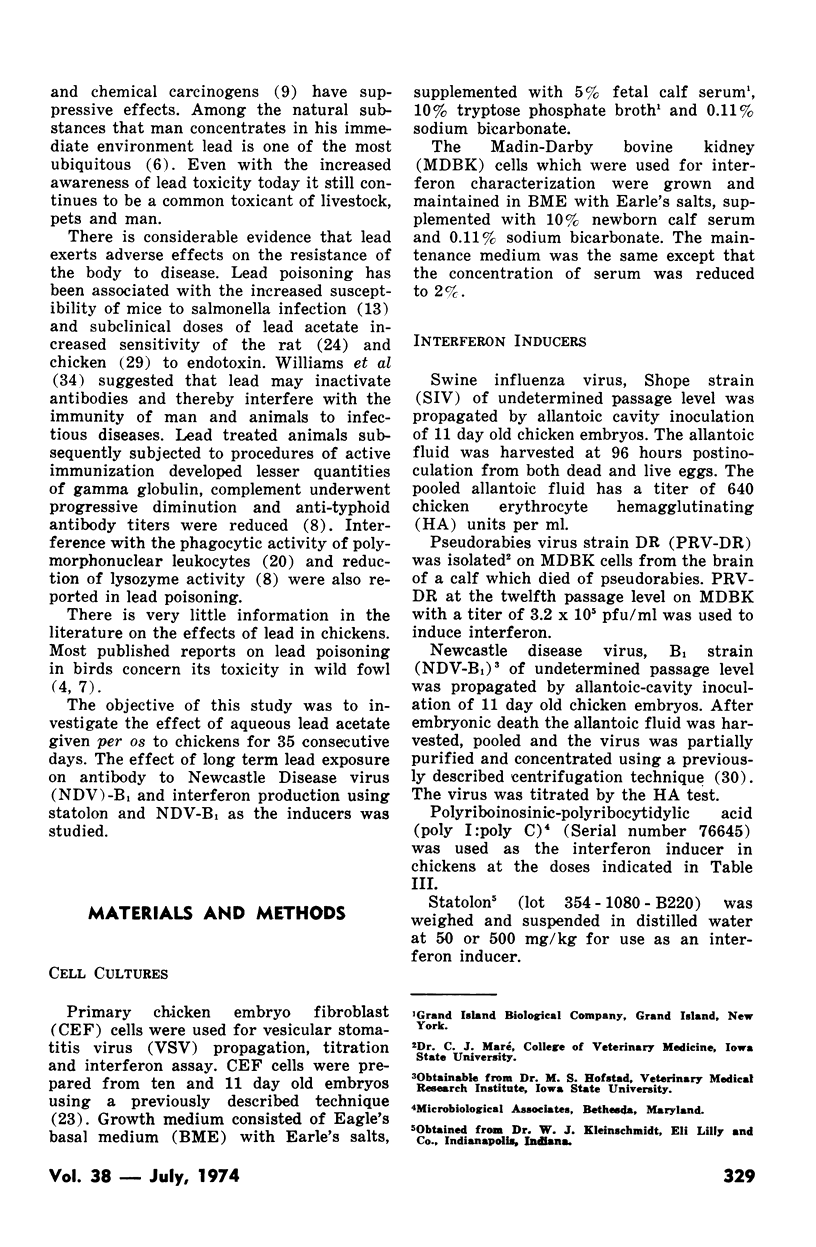
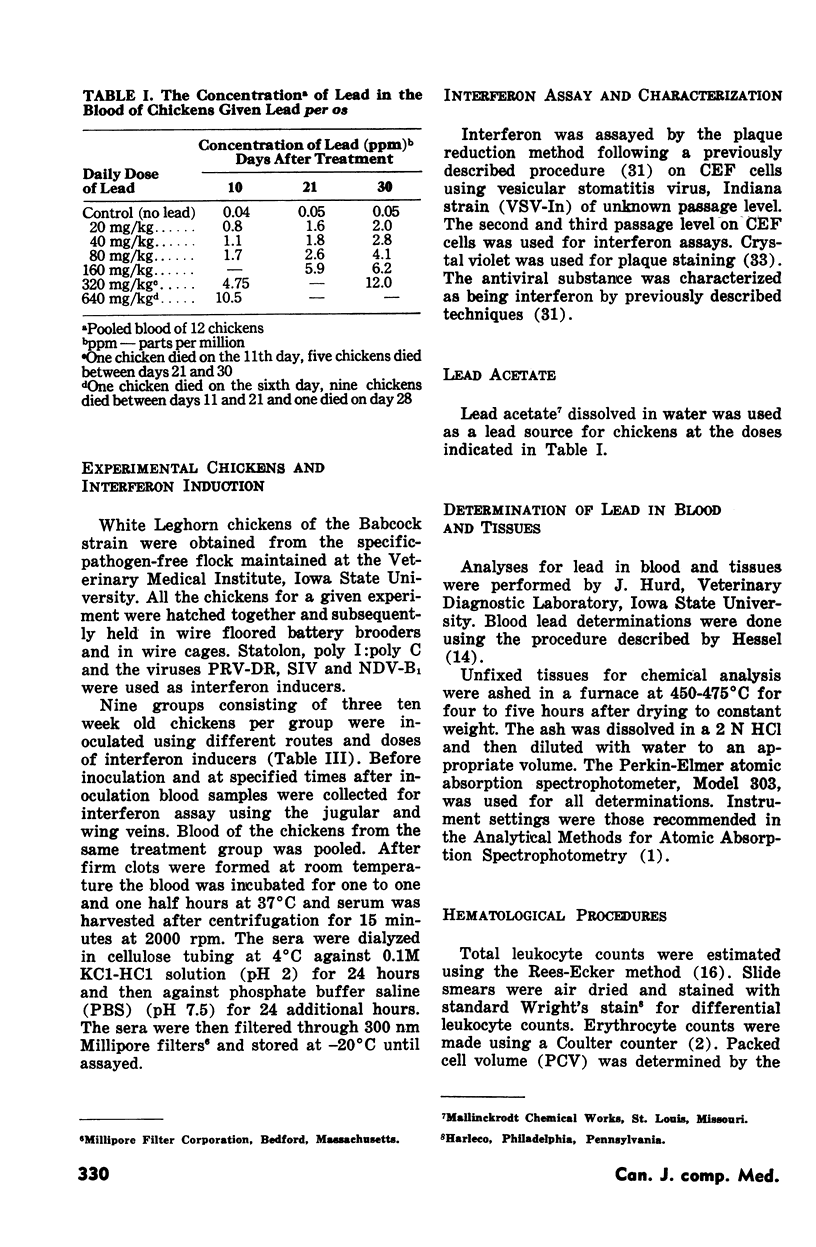

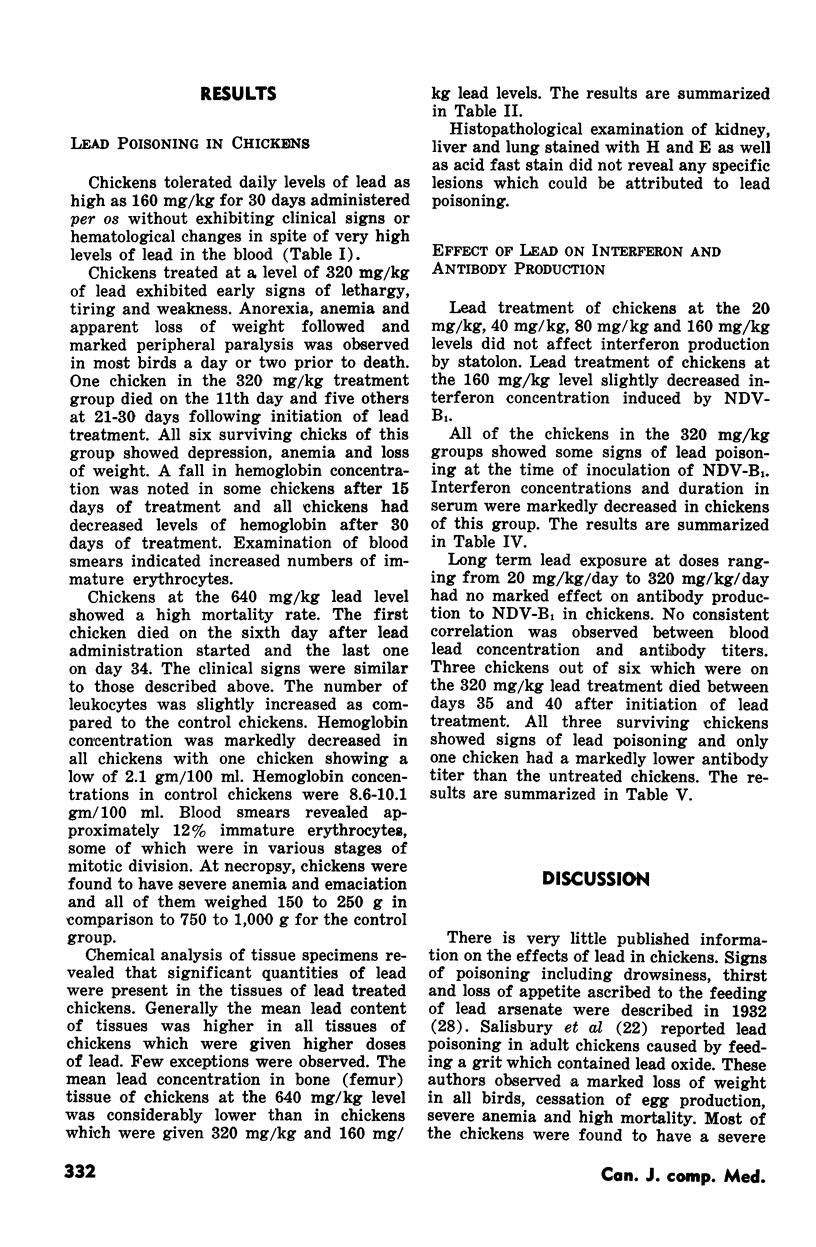
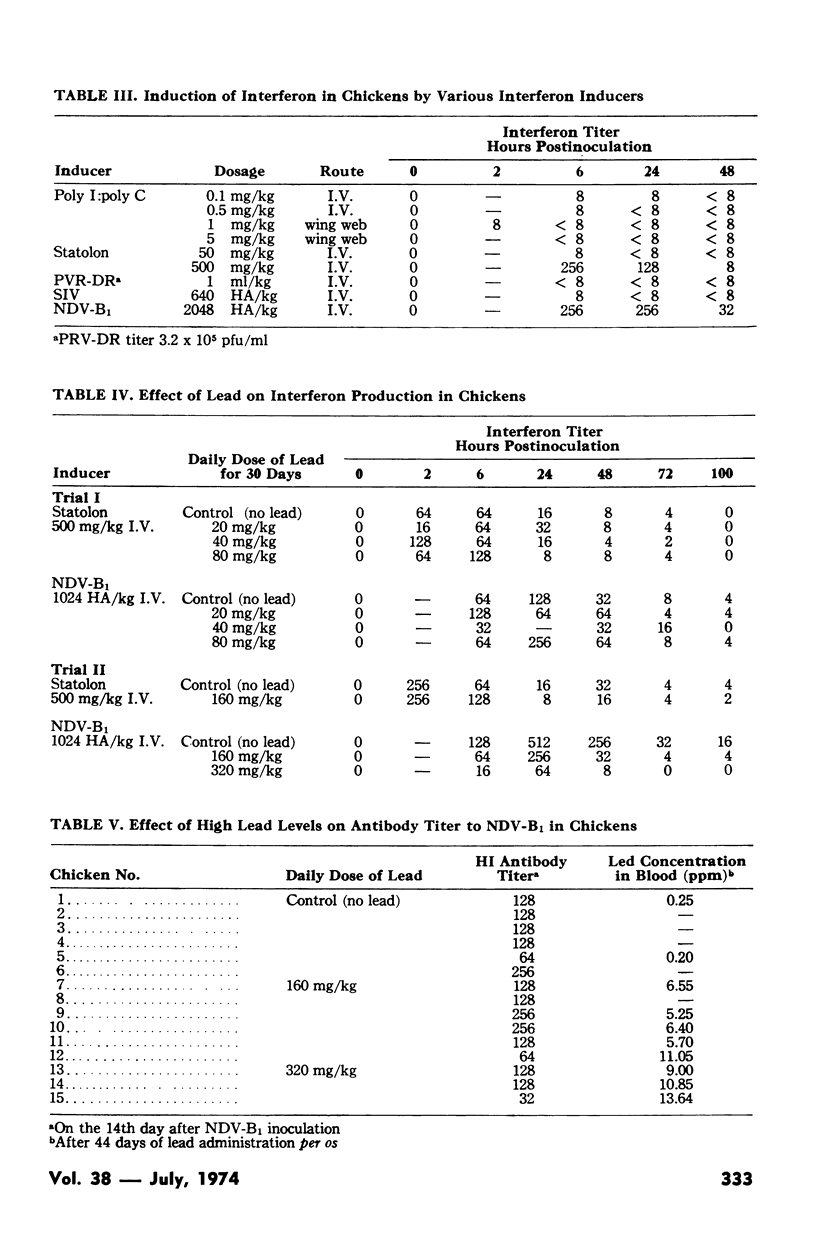
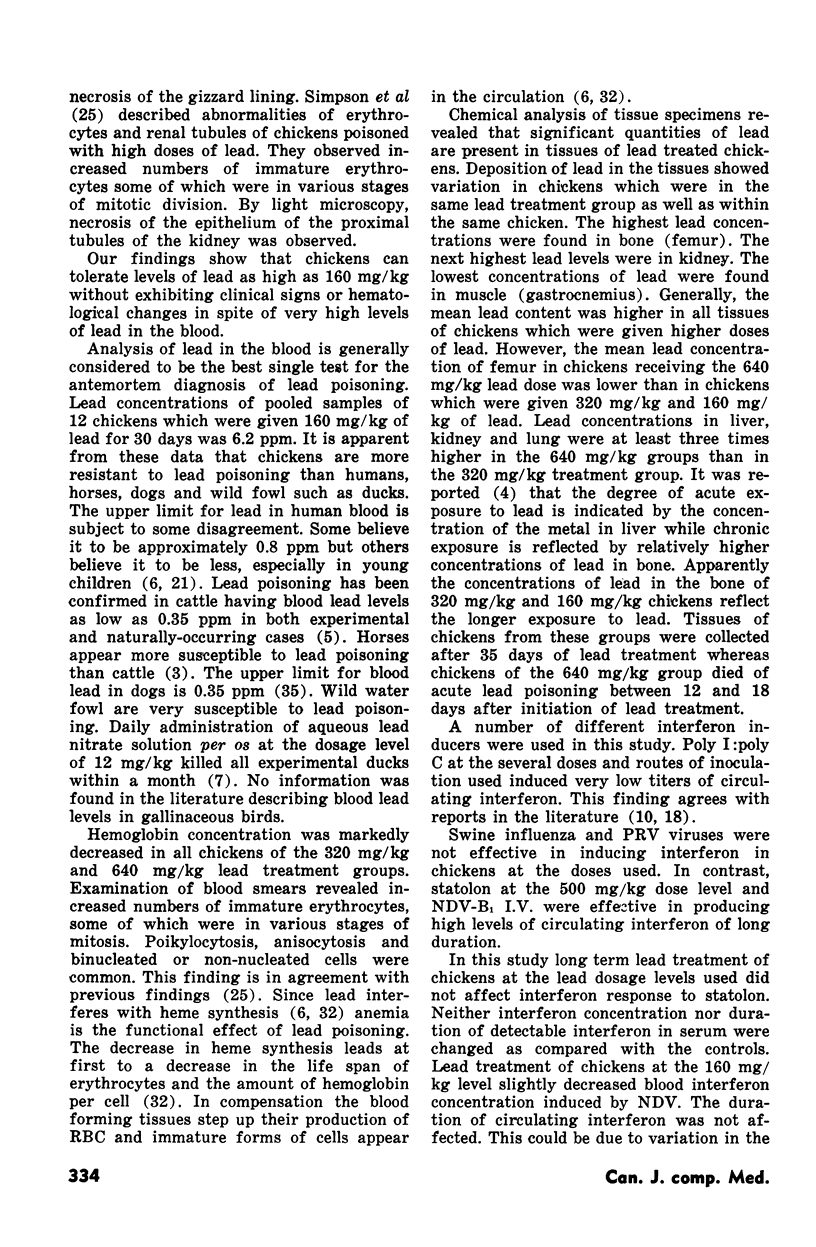
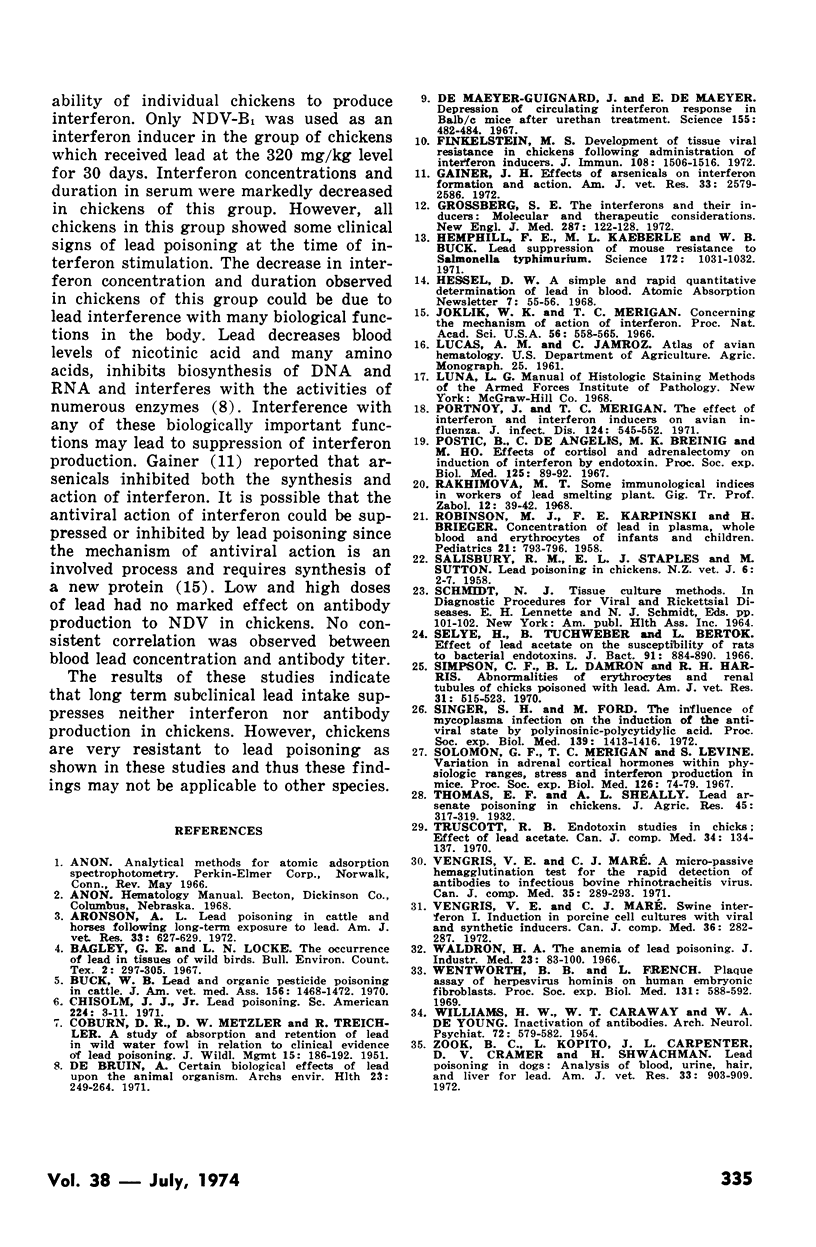
Selected References
These references are in PubMed. This may not be the complete list of references from this article.
- Aronson A. L. Lead poisoning in cattle and horses following long-term exposure to lead. Am J Vet Res. 1972 Mar;33(3):627–629. [PubMed] [Google Scholar]
- Buck W. B. Lead and organic pesticide poisonings in cattle. J Am Vet Med Assoc. 1970 May 15;156(10):1468–1472. [PubMed] [Google Scholar]
- Finkelstein M. S. Development of tissue viral resistance in chickens following administration of interferon inducers. J Immunol. 1972 Jun;108(6):1506–1516. [PubMed] [Google Scholar]
- Gainer J. H. Effects of arsenicals on interferon formation and action. Am J Vet Res. 1972 Dec;33(12):2579–2586. [PubMed] [Google Scholar]
- Grossberg S. E. The interferons and their inducers: molecular and therapeutic considerations. 3. N Engl J Med. 1972 Jul 20;287(3):122–128. doi: 10.1056/NEJM197207202870305. [DOI] [PubMed] [Google Scholar]
- Hemphill F. E., Kaeberle M. L., Buck W. B. Lead suppression of mouse resistance to Salmonella typhimurium. Science. 1971 Jun 4;172(3987):1031–1032. doi: 10.1126/science.172.3987.1031. [DOI] [PubMed] [Google Scholar]
- Joklik W. K., Merigan T. C. Concerning the mechanism of action of interferon. Proc Natl Acad Sci U S A. 1966 Aug;56(2):558–565. doi: 10.1073/pnas.56.2.558. [DOI] [PMC free article] [PubMed] [Google Scholar]
- Portnoy J., Merigan T. C. The effect of interferon and interferon inducers on avian influenza. J Infect Dis. 1971 Dec;124(6):545–552. doi: 10.1093/infdis/124.6.545. [DOI] [PubMed] [Google Scholar]
- Postic B., DeAngelis C., Breinig M. K., Ho M. Effects of cortisol and adrenalectomy on induction of interferon by endotoxin. Proc Soc Exp Biol Med. 1967 May;125(1):89–92. doi: 10.3181/00379727-125-32021. [DOI] [PubMed] [Google Scholar]
- ROBINSON M. J., KARPINSKI F. E., Jr, BRIEGER H. The concentration of lead in plasma, whole blood and erythrocytes of infants and children. Pediatrics. 1958 May;21(5):793–797. [PubMed] [Google Scholar]
- Rakhimova M. T. Nekotorye immunologicheskie pokazateli u rabochikh svintsovoplavil'nogo zavoda. Gig Tr Prof Zabol. 1968 Apr;12(4):39–42. [PubMed] [Google Scholar]
- Selye H., Tuchweber B., Bertók L. Effect of lead acetate on the susceptibility of rats to bacterial endotoxins. J Bacteriol. 1966 Feb;91(2):884–890. doi: 10.1128/jb.91.2.884-890.1966. [DOI] [PMC free article] [PubMed] [Google Scholar]
- Singer S. H., Ford M., Baron S. The influence of mycoplasma infection on the induction of the antiviral state by polyincsinic:polycytidilic acid. Proc Soc Exp Biol Med. 1972 Apr;139(4):1413–1416. doi: 10.3181/00379727-139-36374. [DOI] [PubMed] [Google Scholar]
- Truscott R. B. Endotoxin studies in chicks: effect of lead acetate. Can J Comp Med. 1970 Apr;34(2):134–137. [PMC free article] [PubMed] [Google Scholar]
- Vengris V. E., Maré C. J. A micro-passive hemagglutination test for the rapid detection of antibodies to infectious bovine rhinotracheitis virus. Can J Comp Med. 1971 Oct;35(4):289–293. [PMC free article] [PubMed] [Google Scholar]
- Vengris V. E., Maré C. J. Swine interferon. I. Induction in porcine cell cultures with viral and synthetic inducers. Can J Comp Med. 1972 Jul;36(3):282–287. [PMC free article] [PubMed] [Google Scholar]
- WILLIAMS H. W., CARAWAY W. T., DE YOUNG W. A. Inactivation of antibodies, a causative factor of brain pathology in acute lead intoxication. AMA Arch Neurol Psychiatry. 1954 Nov;72(5):579–582. [PubMed] [Google Scholar]
- Waldron H. A. The anaemia of lead poisoning: a review. Br J Ind Med. 1966 Apr;23(2):83–100. doi: 10.1136/oem.23.2.83. [DOI] [PMC free article] [PubMed] [Google Scholar]
- Wentworth B. B., French L. Plaque assay of Herpesvirus hominis on human embryonic fibroblasts. Proc Soc Exp Biol Med. 1969 Jun;131(2):588–592. doi: 10.3181/00379727-131-33932. [DOI] [PubMed] [Google Scholar]
- Zook B. C., Kopito L., Carpenter J. L., Cramer D. V., Shwachman H. Lead poisoning in dogs: analysis of blood, urine, hair, and liver for lead. Am J Vet Res. 1972 May;33(5):903–909. [PubMed] [Google Scholar]
- de Bruin A. Certain biological effects of lead upon the animal organism. Arch Environ Health. 1971 Oct;23(4):249–264. doi: 10.1080/00039896.1971.10665996. [DOI] [PubMed] [Google Scholar]
- de Maeyer-Guignard J., de Maeyer E. Depression of circulating interferon response in Balb-c mice after urethan treatment. Science. 1967 Jan 27;155(3761):482–484. doi: 10.1126/science.155.3761.482. [DOI] [PubMed] [Google Scholar]


